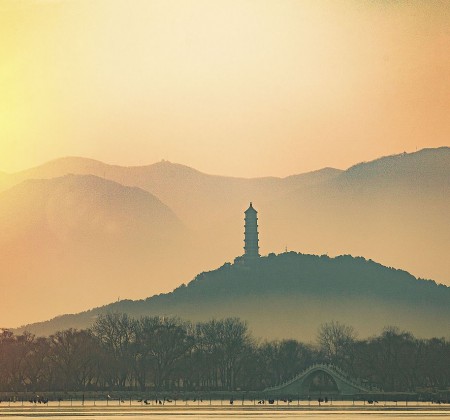The Palace Museum in Beijing
The Imperial Palace is located in the center of Beijing, also known as the Forbidden City. Once inhabited by 24 emperors, it was the imperial palace of the Ming and Qing dynasties (1368-1911). It is now known as the “Palace Museum”. The whole building of the Imperial Palace is magnificent and magnificent, and is known as one of the five major palaces in the world (the Imperial Palace in Beijing, Versailles, France, Buckingham Palace in the United Kingdom, the White House in the United States, and the Kremlin in Russia). It has been listed as a “World Cultural Heritage” by the United Nations Scientific, Educational and Cultural Organization. The palace building of the Imperial Palace is the largest and most complete ancient architectural complex in China, with a total area of more than 720000 square meters and 9999 and a half palaces, known as the “sea of temples”. It is magnificent and spectacular. Whether it is the plane layout, the three-dimensional effect, or the majestic form, it can be called an unparalleled masterpiece. A central axis runs through the entire Imperial Palace, and this central axis is on the central axis of Beijing. The three halls, the last three palaces and the imperial garden are all located on this central axis. On both sides of the axis palace, there are symmetrically distributed many temples, all magnificent and magnificent. These palaces can be divided into two parts: the outer court and the inner court. Foreign dynasties to Taihe, Zhonghe, Baohe three halls as the center, Wenhua, Wuying Dian for the two wings. The inner court takes Palace of Heavenly Purity, Jiaotai Hall and Kunning Palace as the center, and the east and west palaces as two wings, with a rigorous and orderly layout. The four corners of the Imperial Palace have exquisite turrets with exquisite and beautiful construction. Miyagi is surrounded by a 10-meter-high, 3400-meter-long palace wall with a 52-meter-wide moat. At present, some palaces of the Imperial Palace have set up comprehensive history and art galleries, painting galleries, classified ceramic galleries, bronze galleries, Ming and Qing arts and crafts galleries, inscription galleries, toy galleries, four treasures of the study, toy museums, treasure galleries, watch galleries, and cultural relics exhibitions of imperial court rules and cultural relics of the Qing Dynasty, etc., with a large collection of ancient art treasures, accounting for 1/6 of the total number of Chinese cultural relics. It is not only the museum with the richest collection of cultural relics in China, but also the world-famous museum of ancient culture and art, many of which are unique priceless national treasures.
Architectural form of the Imperial Palace
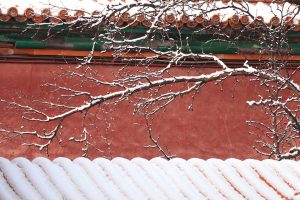
The Imperial Palace is built strictly in accordance with the imperial capital construction principle of “the former dynasty and the back bed, the left, ancestral and right society” in the Book of Zhou Li Kao Gong Ji. The entire Imperial Palace, in terms of architectural layout, is combined into a whole by means of physical changes and ups and downs. Functionally, it accords with the hierarchical system of feudal society. At the same time, it can achieve the artistic effect of left-right balance and physical change. The roof forms of Chinese architecture are rich and colorful, and there are more than 10 different forms of roofs in the Imperial Palace. Take the three halls as an example, the roofs are different. The roof of the Imperial Palace is covered with colored glazed tiles. The main seats are mainly yellow. Green is used in the buildings of the Prince’s residential area. Other colorful glass, such as blue, purple, black, green and malachite green, sapphire blue, are mostly used in gardens or glass walls. There are glass kissing beasts at both ends of the main ridge in the roof of the Hall of Supreme Harmony, swallowing the ridge steadily and forcefully. The kissing beast is graceful in shape and is both a component and an ornament. Some tile pieces create three-dimensional animal images such as dragons and Phoenix, lions and seahorses, symbolizing auspiciousness and majesty. These components play a decorative role in the building.
The front palace of the Imperial Palace required magnificent architectural modeling at that time, with a bright and open courtyard, symbolizing the supremacy of the feudal regime. The Hall of Supreme Harmony is located in the center of the diagonal of the Forbidden City, with ten auspicious beasts on each corner, vivid and lifelike. The designers of the Imperial Palace thought that this would show the majesty of the emperor and frighten the world. The rear inner court requires a deep courtyard and compact architecture, so the east and west palaces are all self-contained, each with gates and walls, arranged relatively and in good order, coupled with a pair of palace lights and several beds, all of which reflect the layout to meet the needs of luxurious life. After the inner court is the court of the palace. In the back garden, there are green pines and cypresses that are not carved in cold years, exquisite rockery superimposed with beautiful stones, buildings, pavilions, pavilions and pavilions, which are beautiful and tranquil.
The Imperial Palace is arranged along a north-south axis, and the three halls, the back three palaces and the imperial garden are all located on this axis. And spread to both sides, north and south straight, left and right symmetrical. This axis not only runs through the Forbidden City, but also reaches the Yongding Gate in the south, the Drum Tower and the Bell Tower in the north, and runs through the whole city.
The Imperial Palace is the crystallization of the intelligence and blood and sweat of the working people hundreds of years ago. When it was first built, there were 100,000 craftsmen enslaved, and millions of people were enslaved. Under the conditions of social production at that time, being able to build such a magnificent and tall complex of buildings fully reflected the high intelligence and creative ability of the working people in ancient China. At the same time, in order to build the Imperial Palace, such as the necessary wood, in the Ming Dynasty, it was mostly collected from Sichuan, Guangxi, Guangdong, Yunnan, Guizhou and other places, and countless working people were forced to cut wood in the primeval forests in the mountains. Most of the stones used are collected from the outer suburbs of Beijing and the mountains two to three hundred miles away from the suburbs of Beijing. Each piece of stone often weighs several tons or even dozens or hundreds of tons. For example, on the steps behind the eaves of Baohe Hall, a stone carved by Yunlong weighs about 250 tons.
Architects believe that the design and architecture of the Imperial Palace is really an unparalleled masterpiece, with its plane layout, three-dimensional effect, majestic, majestic, majestic and harmonious form, magnificent and magnificent architecture, which is the quintessence of ancient Chinese architectural art. It marks a long cultural tradition in China and shows the outstanding achievements of craftsmen in architecture more than 500 years ago.
Standing on a high mountain and looking at the Imperial Palace, you can’t see a window at all, in order to prevent the assassin from finding his way. There are two iron vats in front of the gate, which are fireproof and filled with water.
The four gates of the Imperial Palace
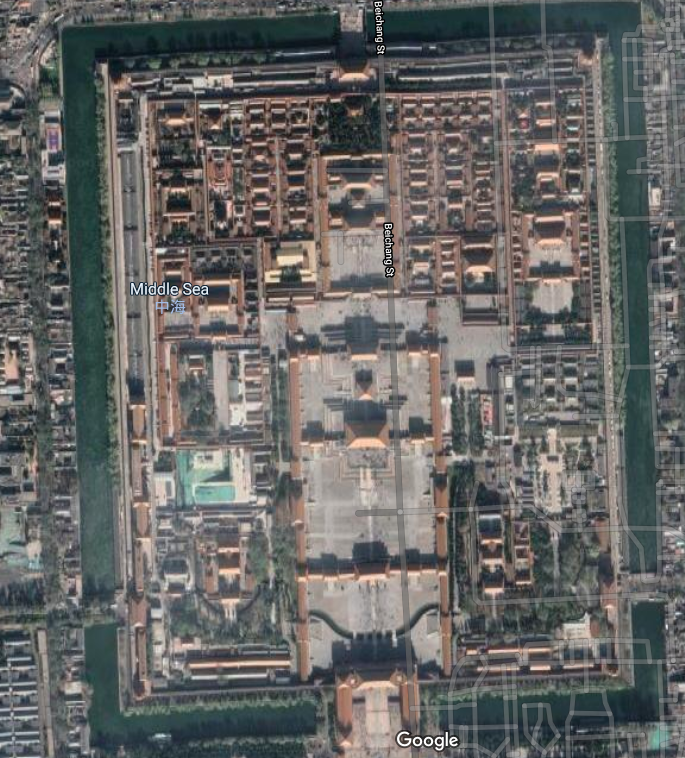
The Imperial Palace has four gates, and the main gate is called Meridian Gate. Its plane is concave and magnificent. After the Meridian Gate, there are five exquisite white marble arch bridges leading to the Gate of Supreme Harmony. The east gate is named Donghua Gate, the West Gate is Xihua Gate, and the North Gate is Shenwu Gate. The four corners of the Imperial Palace have exquisite turrets, 27.5 meters high, cross-shaped roof ridges, triple eaves, bright mountains on all sides, and many angles crisscross.
The main entrance of the Imperial Palace is called “Meridian Gate”, commonly known as Wufeng Tower. The east and west are connected by a 12-meter-high city platform, surrounded by a square square. There are 1 groups of buildings. In the middle of the building, there are 9 wide halls with double eaves on the top of the hall, with four pavilions connecting the eaves and ridges on the left and right side of the city wall, with a corridor connected to each other, 13 houses on each wing extending to the south, and tall corner pavilions in each corner, with auxiliary wings leading to the main hall. The gatehouse of this shape is called “que gate”, which is the most advanced form of gate in ancient China. This group of buildings on the city, the situation is majestic and magnificent, is the highest peak in the Imperial Palace complex. The Meridian Gate was the place where the emperor issued an edict and ordered the battle. Every time the imperial edict is read and the almanac is issued, all the civil and military officials have to gather in front of the square to listen to the decree. In the midst of the Meridian Gate, only the emperor can enter and leave the main entrance. When the emperor gets married, the queen enters once, and the top three, the second in the list, and the three who explore flowers in the palace examination can walk out of the door once. The minister of civil and military affairs went in and out of the east gate, and the princes of the patriarchal clan went in and out of.
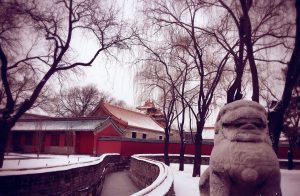
The back door “Shenwu Gate” was the “Xuanwu Gate” in the Ming Dynasty, and Black Tortoise was one of the four ancient immortal beasts. In terms of orientation, left Azure Dragon, right White Tiger, former Vermilion Bird, Post Black Tortoise, and Black Tortoise dominated the north, so the north gate of the imperial palace was mostly named “Black Tortoise”. During the reign of Kangxi in the Qing Dynasty, it was renamed “Shenwumen” because of taboo. Shenwu Gate is also a gatehouse form, with the highest level of double eaves and temple-style roof, but its main hall has only five rooms and corridors, and there are no wings extending left and right, so its shape is one level lower than that of Meridian Gate. Shenwumen is the access control for daily entry and exit in the palace. Now Shenwu Gate is the main entrance of the Palace Museum.
Donghua Gate and Xihua Gate correspond to each other. There is a stone of dismount outside the door, the Jinshui River flows from north to south inside the door, a stone bridge is built on it, and three doors are located in the north of the bridge. Donghua Gate and Xihua Gate shape is the same, plane rectangle, red city platform, Baiyu Xumi seat, in which there are three coupon doors, coupon hole outside the inner circle. There are city towers built on the city platform, with yellow glazed tiles and double eaves at the top of the hall. The city tower is five wide, three deep, and a porch on all sides.
Within the Meridian Gate, there is a vast courtyard, in which there is an arc of the inner Jinshui River stretching from east to west, and to the north is the gate of the palace of the outer dynasty-Taihe Gate, with courtyards on the left and right. There are five bridges on the Jinshui River, equipped with white marble railings, turning with the river, shaped like a jade belt.
Three halls
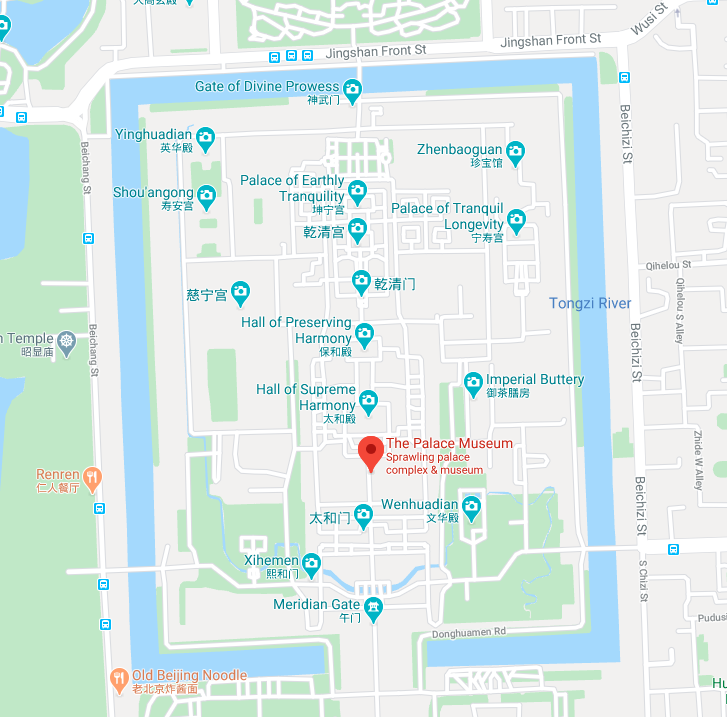
Inside the Taihe Gate, in the open courtyard of more than 30,000 square meters, it is the center of the foreign dynasty: the Hall of Supreme Harmony, the Hall of Zhonghe, and the Hall of Baohe, collectively known as the three halls (Fengtian Hall, Huagai Hall and Jishen Hall in the Ming Dynasty). In Jiajing, it was renamed: Huangji Hall, Zhongji Hall and Jianji Hall. It is now known as the name of the Qing Dynasty. These three halls are the main buildings in the Imperial Palace. They are different in height and shape, and their roofs are also different. They are rich and diverse but not rigid.
The Hall of Supreme Harmony, the Hall of Zhonghe and the Hall of Baohe are built on an 8-meter-high I-shaped platform made of white marble, with Taihe in the front, neutralization in the middle and Baohe in the rear. Yuanwang is like Qionggong Xianque in mythology. The three layers of the platform overlap, and the edges of each floor are decorated with marble bars, watchposts, and faucets, and among the three platforms, three stone steps are carved with flat dragons, setting off the “imperial road” of waves and clouds. On the table of 25000 square meters, there are 1415 transparent fence boards, 1460 watchposts carving Yunlong Xiangfeng, and 1138 bibcock. The three sets decorated with so much white marble have overlapping shapes, which is a decorative art with a unique style in ancient Chinese architecture. And this kind of decoration is the drainage pipe of the Mesa in terms of structure and function. Under the stone on the fence floor, there is a small hole, and the bibcock protruding from the watchpost also carves a small hole. Every rainy season, 3 Rain Water layer by layer by the small hole discharge, water from the faucet, thousands of dragons spray water, spectacular. This is a scientific and artistic design.
Hall of Supreme Harmony
Supreme Harmony Hall (Ming Dynasty, known as Heaven Hall, Huangji Hall), commonly known as “Jinluan Hall”, Taihe Hall is 35.05m high, 63 meters from east to west, 35 meters from north to south, covering an area of more than 2380 square meters. The ratio of length to width is 9 / 5, which means ninety-five. The area is the largest of the halls of the Forbidden City, and the shape is also the highest standard, the most magnificent building. The Hall of Supreme Harmony is the main hall with five ridges and four slopes, with a long ridge from east to west, with two oblique vertical ridges in front and back, thus forming a roof with five ridges and four slopes. There are 10 beasts in the cornice corners (dragon, Phoenix, lion, Tianma, seahorse, seahorse, mackerel, fish, gazelle, bullfight, Xingshi), which are special cases of Chinese ancient architecture. From about the 14th century to the Ming Dynasty, the double eaves of the imperial palace was the highest-ranking form of the feudal palace. The Hall of Supreme Harmony has 72 pillars up to 1 meter in diameter, 6 of which surround the throne with pan dragon pillars painted with powder and gold. There are Lek powder gold lacquer wood columns and exquisite Panlong algae wells in the hall, and in the middle of the hall is the symbol of feudal imperial power-the golden lacquer carved dragon throne, which is set on the 2-meter-high platform in the temple, with the golden lacquer carved dragon throne placed in front of the throne with beautiful crane, stove, tripod and carved dragon screen behind. The Hall of Supreme Harmony is the largest wooden structure in the Imperial Palace, the most spectacular building in the Imperial Palace, and the largest wooden temple in China. The whole hall is decorated with splendor and splendor. The Hall of Supreme Harmony is the place where the emperor holds a major ceremony. That is, the emperor ascended the throne, birthday, wedding, New Year’s Day and so on are all celebrated here.
Zhonghe Hall
Zhonghe Hall (called Huagai Hall and Zhongji Hall in Ming Dynasty) is one of the three halls of the Imperial Palace, which is located behind the Hall of Supreme Harmony. Zhonghe Hall is 27 meters high, square in plane, 3 wide in face and 3 in depth, with corridors on all sides and gold brick floor, with a construction area of 580 square feet. Yellow glazed tile single eaves four corners save spire, there is a gilded top in the middle. The tip of the four ridges is gathered into a sharp shape, and the gold-gilded spherical top of the bronze tire is called four corners in architectural terms. Zhonghe Hall is the place where the emperor went to the Hall of Supreme Harmony to have a rest and practice etiquette before the grand ceremony. The emperor stopped here before going to the Hall of Supreme Harmony, saluted by cabinet ministers and officials of the Ministry of Etiquette, and then went into the Hall of Supreme Harmony to hold a ceremony. In addition, before offering sacrifices to heaven and earth and the temple, the emperor should also review the “Zhu version” with the sacrifice written here, and examine the farming equipment here before going to Zhongnanhai for ploughing.
Baohe Hall
Baohe Hall (known in the Ming Dynasty as Jinshen Hall and Jianji Hall) is also one of the three major halls of the Imperial Palace, behind Zhonghe Hall. Baohe Hall is 29 meters high, the plane is rectangular, 9 rooms are wide, 5 rooms are deep, and the construction area is 1240 square feet. Yellow glazed tile heavy eaves Xieshan roof. There is a right ridge in the middle of the roof, and there are two vertical ridges in front and back, and another bifurcated ridge in the lower part of each vertical ridge, together with a total of 9 vertical ridges, vertical ridges and bifurcated ridges, which is called Xieshan style in architectural terms. Baohe Hall is the place where Emperor New Year’s Eve gives banquets to foreign princes every year. Baohe Hall is also the place where the imperial examination is held.
Inner court
The second half of the Imperial Palace is called the Inner Court. Qianqing Gate, the gate of the Imperial Palace, has a glazed wall on the left and right, and the latter three palaces are in the door. The inner court is centered on Palace of Heavenly Purity, Jiaotai Hall and Kunning Palace, and there are six eastern and western palaces on the east and west wings, which is not only the place where the emperor deals with daily government affairs, but also the place where the emperor and his concubines live. The second half is the same as the first half in architectural style. The first half of the architectural image is serious, solemn, magnificent, majestic, to symbolize the supremacy of the emperor. The second half of the inner court is full of life flavor, most of the buildings are their own courtyard, with gardens, study, pavilion pavilions, mountains and rocks, and so on.
A fierce battle took place in Longzongmen in the Qing Dynasty. In the 18th year of Jiaqing (1813), a peasant uprising took place in the Central Plains. Lin Qing, the peasant leader, planned and led a team from Beijing to attack the Forbidden City directly. On September 14, the insurgents, disguised and divided into two routes, planned to enter Miyagi from Donghua Gate and Xihua Gate. Xihuamen a group of eunuchs Liu Decai, Liu Jin and others led the rapid attack to Longzongmen, and launched a fierce battle here. The change in the Forbidden City “led to things that did not happen in the Han, Tang, Song and Ming dynasties”, and Emperor Jiaqing made an exception and issued a “imperial edict of sin” to the world. Up to now, there are arrows on the plaque of Longzongmen, which is said to be the relic of this battle. The arrow is located on the lower left side of the plaque.
Palace of Heavenly Purity is in front of the inner courtyard of the Imperial Palace. Palace of Heavenly Purity is the main hall of the inner court, 20 meters high. Heavy eaves and roofs on top of the temple. There is a throne in the middle of the temple, and there is a “aboveboard” plaque inside. There are warm pavilions at both ends. Palace of Heavenly Purity was the bedroom of feudal emperors. Before Emperor Kangxi of the Qing Dynasty, it was the place where the emperor lived and handled government affairs. After the Emperor Yongzheng of the Qing Dynasty moved to the Hall of nourishing the Heart, he still reviewed the newspaper, sent officials and summoned his subordinates.
Kunning Palace is at the back of the “inner court” of the Imperial Palace. Heavy eaves and roofs on top of the temple. Kunning Palace was the queen’s dormitory before Emperor Yongzheng of the Ming and Qing dynasties, with warm pavilions at both ends. It was changed to a place of worship in the Qing Dynasty. After Yongzheng, the West warm Pavilion was the sacrificial ground for shamans. Among them, the East warm Pavilion is the bridal chamber for the emperor’s wedding, and the three emperors Kangxi, Tongzhi and Guang Xu all held weddings here.
Jiaotai Hall is between Palace of Heavenly Purity and Kunning Palace, implying the meaning of “the intersection of heaven and earth, good health and happiness”. It was built in the Ming Dynasty and rebuilt in the third year of Qing Jiaqing (AD 1798). It is a square hall with four corners, gold-plated treasure top and dragon and Phoenix patterns. During the Ming and Qing dynasties, the hall was the place where the queen’s birthday celebration was held. The queen of the Qing Dynasty called the silkworm ceremony, it is necessary to check the preparation of the ceremony. The “Seal” (seal) of the Qing Dynasty is also collected here.
After Yongzheng, Yangxin Hall became the actual residence of the emperor in the Imperial Palace in the Qing Dynasty. During the reign of Tongzhi in the Qing Dynasty, Cixi and Cian Empress hung down the curtain to listen to the government in the East warm Pavilion of Yangxin Hall.
In the last three palaces, there are also the Duan Ning Hall, which stores crowns, robes, belts and shoes for the emperor, and the Maoqin Hall, where books and calligraphy are placed. Nanfang has the upper study of the prince, the study of the bachelor of Hanlin, and the place where the daily life of the court is managed. In addition, there are left and right symmetrical Rijing Gate, Yuehua Gate, Longguang Gate, Fengcai Gate, Jihua Gate, Duanze Gate, Longfu Gate, Jinghe Gate, and the six Eastern and Western palaces where the concubine lives. This left-right symmetrical plane layout is also one of the characteristics of ancient Chinese architecture.
The Ningshou Palace on the east side of the inner court was built at a cost of 1.102 million silver after Emperor Qianlong announced his abdication.
To the north of Kunning Palace is the Imperial Garden. There are towering pines and cypresses, precious flowers and trees, mountains and rocks and pavilions in the imperial garden. The Imperial Garden, formerly known as Gong Hou Yuan, covers an area of more than 11000 square meters and has more than 20 buildings. With Qin’an Hall as the center, the landscape architecture adopts the pattern of primary and secondary complementary, left and right symmetry, compact layout and classical richness. Duixiu Mountain, northeast of the Hall, is built on top of the Taihu Lake stone, and the two pavilions named Wanchun Pavilion and Qianqiu Pavilion can be said to be the most magnificent among the ancient pavilions currently preserved.
East sixth Palace
The eastern and western palaces of the Imperial Palace are all the places where the emperor’s concubines and heirs live. The East sixth Palace includes Jingren Palace, Yonghe Palace, Chenggan Palace, Yonghe Palace, Zhongzi Palace and Jingyang Palace, which was built during the Yonghe period of the Ming Dynasty.
The East sixth Palace includes Zhong Cui Palace, Chengqian Palace, Jingren Palace, Jingyang Palace, Yonghe Palace and Yonghe Palace. Among them, the Eastern Empress Dowager ci’an lives in Zhong Cui Palace. In addition, the Jubilee Palace is also very famous, because the only Western building in the Forbidden City is in the Yanchi Palace, which is the Crystal Palace widely spread among the people. During the Daoguang period, the Yanchi Palace was destroyed by lightning, so during the reign of Xuantong, the rulers of the Qing Dynasty decided to build a palace that was not afraid of fire, so construction of a palace made of white marble and glass began. But in the middle of the project, the Qing Dynasty perished and the whole project was forced to stop. At present, the Jubilee Palace is not yet open to the public.
At present, most of the East six palaces have been changed to ancient art galleries, including Ming and Qing Arts and Crafts Museum, Ceramic Museum, Bronze Museum, clock Museum, painting Museum and Treasure Museum. The largest number of visitors are the Treasure Hall and the Watch Museum, which is located in the Fengxian Hall, and the Treasure Museum is located in the Hall of Conservation, Leshou Hall and Summer Palace in the northeast corner of the Imperial Palace. The Toy Gallery is located in the joint room to the east of Kunning Palace called Dongban Room.
The mystery of the Imperial Palace
Where is the cold palace?
Where is the “cold palace”? we should first talk about the “three palaces and six courtyards”. Palace of Heavenly Purity, Jiaotai Hall and Kunning Palace on the middle road of the Imperial Palace are called the “three palaces”. The six courtyards refer to the six palaces on East Road: Zhai Palace, Jingren Palace, Chengqian Palace, Zhongzi Palace, Jingyang Palace and Yonghe Palace. The feudal emperors had the “supreme” power to choose their concubines at will. The emperor has many wives and concubines. As for the woman chosen in the palace, once she falls out of favor, she will wait to die in the forbidden room of the palace, which is even more tragic.
There is no fixed place in the “cold palace” of the Imperial Palace, but there have always been two views: one is Palace of Heavenly Purity and the Changchun Palace; the other is that the “cold palace” has no fixed address and is commonly known as the “cold palace” where princesses and princes are banned. Looking through the historical materials of the Ming and Qing dynasties, Leng Gong is not the official name of a certain palace. According to some literature records, there were several places that were regarded as “cold palaces” in the Ming and Qing dynasties.
At the time of the apocalypse emperor in the late Ming Dynasty, Cheng Fei Li offended Wei Zhongxian, a powerful eunuch, and was driven from Changchun Palace to Qianxi, west of the Imperial Garden, where she lived for four years. Successively living in seclusion in Qianxi, there are fixed concubines, scrupulous concubines and other people. This “cold palace” is to the west of the Forbidden City.
Before Emperor Guang Xu’s concubine was dropped into the well by Cixi, it is said that she was locked up in the three north houses north of Jingqi Pavilion (now collapsed), which is in the mountain gate west of today’s Zhenfei well. If this rumor from the eunuch is true, then this place can also be regarded as a “cold palace”.
The designer of the Imperial Palace
For a magnificent building like the Imperial Palace, if it is a huge project, who will be responsible for the design? And who is in charge of the construction? This is indeed a historical mystery, which puzzles many old Beijingers. Because the architecture of the Imperial Palace is not as clearly engraved as modern architecture with the words such as when the building was built and who designed it. At present, most people think that the Imperial Palace was designed by an outstanding craftsman in the Ming Dynasty.
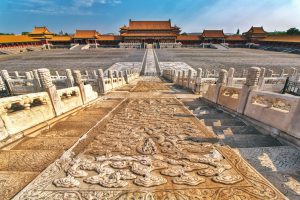
Mr. Yu Mengyun, a senior engineer in the ancient construction department of the Palace Museum, put forward a different opinion: it is not accurate to say that Li Xiang, who once participated in the construction of the Nanjing Palace, is the designer of the Forbidden City. In fact, Li Xiang is only the construction host of the Forbidden City. The real designer of the Palace Museum should be the unknown Cai Xin. In the 15th year of Yongle, when the Forbidden City Palace began to enter the most exciting part of large-scale construction, Li Xiang came to Beijing with Zhu Di from Nanjing to preside over the construction of the palace, while Tsai Xin had already presided over the planning, design and construction of the Forbidden City and the city of Beijing.
The place where the emperor went to court
Now many people think that the Hall of Supreme Harmony is usually used in the upper court, but in fact this is not the case. The Hall of Supreme Harmony is actually a place for holding various ceremonies, but it is actually used very rarely. Throughout the Ming and Qing dynasties, the emperors went to the Dynasty mainly in: the Gate of Supreme Harmony, the Gate of Qianqing (listening to the imperial gate), the Palace of Heavenly Purity (where the emperor summoned the minister when there was something important or important), and the Hall of nourishing the Heart (hanging the curtain to listen to the government, in the late Qing Dynasty). It’s not what we usually call the Hall of Supreme Harmony.
Why are there so many dragons in the Imperial Palace?
The Forbidden City is the world of dragons. The shapes of dragons are varied and lifelike. In the feudal society of our country, the emperor was called “the son of the real dragon” and was the master of the earth. The Forbidden City was the imperial palace of the Ming and Qing dynasties, so the halls, bridges, dancers, stone carvings, imperial seals and clothing articles in the palace were all decorated with dragons. So, how many dragons are there in the Imperial Palace? I’m afraid no one can tell. Some people have made a rough calculation that the Imperial Palace claims to have more than 8000 palaces, and only if there are six dragons in each temple, there are nearly 40, 000 dragons. If you add all the dragons on the architectural decoration and all the imperial articles, it will be innumerable.
Some people have made a statistics, that is, there are 2632 dragon patterns on the roof ridge, Wadang and dripping water of the Hall of Supreme Harmony, 5732 dragon patterns on the outer eaves and painted doors and windows, 4037 dragon patterns on the inner eaves and the ceiling of the inner beams of the Hall, 609 dragon patterns on the golden pillars, algal wells, Thrones, screens and furnishings in the Hall, and 542 dragon patterns on the walls and warm pavilion door covers in the Hall. This is an incomplete statistics. There are as many as 13,844 dragon patterns, dragon carvings and other forms of dragons inside and outside the Hall of Supreme Harmony. The decoration design of this Wanlong pilgrimage constitutes a majestic and mysterious atmosphere to achieve the effect of deifying emperors and intimidating subjects.
Why don’t trees be planted in the courtyards of the three halls?
Some people have proposed that trees should not be planted in the courtyards of the three halls, mainly out of the need to set off the artistic conception. The Hall of Supreme Harmony, the Hall of Zhonghe and the Hall of Protection, also known as the three halls of the foreign dynasty, are the places where the emperors held the grand ceremony, which is not only the center of the whole outer palace building, but also the center of the whole city of Beijing. In order to highlight the majesty of this group of palaces, many architectural techniques have been adopted. one is that there are no trees in the courtyard, starting from Tiananmen Square, the main gate of the Imperial City, through Duanmen, Meridian Gate, and Taihe Men. there are no trees in a series of courtyards (the trees before and after the Duanmen Gate were planted after the Revolution of 1911). At that time, when people went to see the son of Heaven and entered Tiananmen Square, after a long imperial road, marching through the undulating and changing architectural space, they would feel a kind of invisible and growing mental pressure, and finally entered Taihe Men. this mental pressure reached its climax when we saw the wide square and the towering hall towering on the triple platform foundation. The wide square and the blue sky make the three halls more majestic and magnificent. And this is exactly what the supreme son of Heaven asks of his subjects. If trees are planted in these courtyards, the shade is pleasant and the birds sing, it will destroy the majestic atmosphere of the court.
Opening hours:
April 1-October 31 (peak season) Tuesday to Sunday 08Rose 30muri 17Rose 00, not open on Mondays;
November 1st-March 31st of the following year (off-season) Tuesday to Sunday 08Rose 30MIT 16RV 30, not open on Mondays;
The Palace Museum is not closed on legal holidays on Mondays.
Traffic:
Buses 1, 4, 5, 10, 20, 52, 101, 103 and other multi-way buses can reach;
Take the first line subway Tiananmen East Station and Tiananmen West Station and walk from Tiananmen Square.











